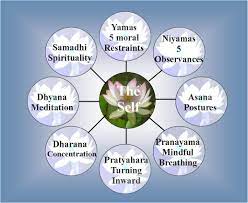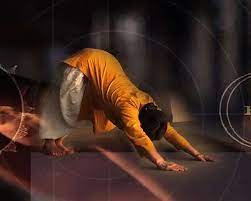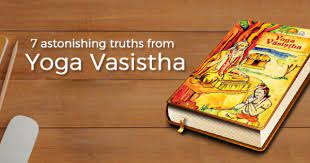The 8 Limbs of Yoga explained By Yoga Sutras Of Patanjali
If you have read about yoga and its background, there are high chances that you must have read about Patanjali. He is one of the pioneers, in solidifying the reach of yoga among the common man. There are many schools of yoga, which follow his lineage. He was a great yogi of theTamil Saiva Siddhanta tradition. Moreover, he is regraded as one of the best amongst the peers of his times. He has penned the Yoga Sutras, which is like a Bible for yoga practitioners. Now, according to mythology, there may be several Patanjali’s. However, we are concerned about the one, who has penned down the Sutras. You will learn about the Sutras in a detailed manner in the 200 hour yoga teacher training in rishikesh.

He had simplified the knowledge of yoga, according to the modern times. He compiled the teachings of his time, into the Yoga Sutras, so that people could understand the same. You will be amazed to know, that Patanjali is also called the Father of Yoga. Apart from the Yoga Sutras, Patanjali has been credited with two other works in his times. The first one being the Mahabhashya. And the second one, the Carakavarttika. It is also called the Charak Samhita. Although, Patanjali is credited with these works, these were published at least 1000 years apart. However, many scholars believed Patanjali to be an immortal or divine being.
He is believed to have been self-born. He may have taken an incarnation in that body, to help humanity. His name is also mentioned among the 26 serpents in the Puranas. His yoga teachings also show up in the Ananta.
Now, let us find out about the Sutras.
Yoga And The Sutras
What most of you see and believe in, are the physical forms or poses that practitioners take up. The Padmasana being the most famous one. However, yoga is much more than that. Yoga is a way of life, in the true sense. Yoga has basically come down from the Sanskrit word ‘Yug’. It means ‘Union’. As mentioned in the first paragraph of Yoga Sutras, Yoga is about the complete calmness of the mind, which is devoid of any activity. The asanas, that most of you see and practice, is just one of the limbs of yoga. Patanjali outlined the sutras in his book, Patanjali’s Yoga Sutras. Many scholars believe that, he may have ideated the same, and entrusted the job of compilation to his disciples, which may have taken shape after he left his mortal body. The Sutras is more about the development of human consciousness, rather than a philosophical study.
In the Sutras, Patanjali mainly outlines the 8 limbs or parts of yoga practice. These are steps that merge into one another, as you grow and get more accomplishment in the field of yoga. You can either practice them simultaneously, or separately one after the other. You can also consider it to be a spiritual pathway. You will read the same in four different chapters, as a part of Patanjali’s Yoga Sutras. Today, yogis follow the same teachings in Ashtanga Yoga. The eight limbs of yoga that we are going to learn about are-
- Yama
- Niyama
- Asana
- Pranayama
- Pratyahara
- Dharana
- Dhyana
- Samadhi
1. Yamas
You will learn about the same in the yoga teacher training in rishikesh, which is one of the best courses for yoga enthusiasts. The Yamas are mainly concerned with the world around you. Moreover, your interactions with the world are also a part of it. You have to consider your surroundings, before you truly become a yogi. When you keep all the aspects of the Yamas in mind, you will be able to become more authentic.
- The first Yama that you will learn in the yoga teacher training courseis Ahimsa. It can be translated into not harming anyone. Moreover, you should not allow any negative thoughts in your mind. After you start practicing the same, you will avoid any sort of altercation with anyone that can result in violence.
- The next Yama that you will read in Patanjali’s Yoga Sutras is Satya or truthfulness. In yoga, you will work towards a nature that is in sync with your innermost thoughts. Humans show emotions and moods that are interchangeable. However, each of these depict their own truth. Once you start walking on the path of Satya, you will be unchangeable.
- Asteya means, that you must not steal. Theft is a crime, and something that you must avoid. When the mind fluctuates, one feels like stealing. It also arises from the lack of belief in one’s abilities. If you practice yoga, you will start realizing your innate abilities. So, you will also refrain from stealing. You will realize that you are enough for yourself.
- Brahmacharya is often connected with celibacy. However, its meaning is more profound. It is the behaviour that can lead you to success as a Brahman. It mainly points toward the fact, that abstinence from sexual desires can take you one step closer to god.
- Aparigraha – It means moving away from greed. You should be of non-hoarding nature. You need to understand, that there is an abundance of everything in this world. So, you do not need to snatch things from others, or hoard things.
2. Niyamas
These relate to your inner observances. You will be able to build your character, if you follow the Niyamas. When you follow the Niyamas, without any hindrance, it helps you to peek deep within. There are 5 Niyamas that you need to follow.
- Saucha – It relates to cleanliness. However, it does not mean physical cleanliness. If mainly points towards the habits that we form in course of time. The habits may be detrimental to our growth. You will learn to sift through the impurities, that if removed will lead to greater enlightenment.
- Santosha – It relates to contentment. It is a very common fluctuation of the mind, but you can cultivate contentment. It will help you to accept and appreciate what you already have. And, so you can move forward in your journey.
- Tapas – It is nothing but discipline, which you need to inculcate as a part of life. It is also about the inner wisdom, which many of you tend to ignore. This inner purpose can fuel your sense of purpose in the true sense of the word.
- Svadhyaya – It means self-study. According to Patanjali, there is no better way to evolve than to study more and more. You will get to know your inner desires better, if you study a lot. It also brings you a step closer to your true self.
- Isvara Pranidhana – It is surrendering to God. You can also surrender to a higher consciousness, and live an authentic life. If you cultivate this, you will be able to let go of the Vrittis that cause worry and strife. In the process, you will feel empowered.
3. Asanas
You can call them postures as well. In the original verses of Patanjali, there was the mention of asana but they only pointed towards the forms which one should take, during meditation and Pranayama. Now, it has been incorporated as a physical manifestation of yogic principles. Hatha Yoga texts mention many different asana, but the ultimate importance of the posture that we undertake is ‘sthirasukhasana.’ The main idea is to sit in comfort, so that pains in the body do not distract you. Moreover, you should concentrate on a pose, which helps you to remain unaffected by external disturbances.
4. Pranayama
It is basically the fourth Sutra. ‘Prana’ is the life force, whereas ‘ayama’ means expansion. You can also call it freedom of breath. When you work with various breathing techniques, you can alter your mind as well. You can choose various calming practices and energizing ones as well. Each way of breathing, will have different implications on your body, mind, and the soul. The various Pranayama techniques that you may learn as a part of the 300 hour yoga teacher training are Chandra Bhedhana, Kapalbhati, Ujjayi, Bhastrika, Bhramari, and Shitali, to name a few. The process of breathing, that you will practice include Kumbhaka, Rechaka, and Puraka.
5. Pratyahara
It is the sense of withdrawal. This is what you need to practice, when you are sitting for meditation. Focus on drawing in, all your senses. The practice points towards the switching off, of all the senses. If you are experienced in this practice, you can actually make it a part of your life. In this practice, you become so absorbed in what you do, that you cannot feel, see, hear, smell or taste.
6. Dharana
This stage points towards Focussed concentration. It is quite closely linked to Pratyahara. And they are almost the same aspects. To concentrate on something, you need to concentrate on only one thing. It should be your point of focus. You can only draw all your senses, if you develop proper focus and concentration. You can try yogic practices like Trataka, and Visualization for the purpose.
7. Dhyana
It is the seventh limb of yoga, according to Sage Patanjali. It points towards meditative absorption. When you totally get absorbed in meditation, it is termed as actual meditation. You cannot see, hear, smell, taste or feel in such a situation. In another type, you could just observe everything from the point of view of a observer. However, you will not be able to react. This is true Dhyana. When you are meditating in reality, you do not have to tell anyone that you are meditating. People can see you and understand the same.
8. Samadhi
This is the last stage of the pathway. Many of you may already know, that Samadhi means enlightenment. Some yogis also call it the final stage of conjunction with the universe. Many people have the feeling that Samadhi means floating in mid-air, or being able to walk on water. It is actually called Realization. It is also defined as the ability to see clearly and without any hindrance. You will be able to see life, in its true form, from the moment you start believing in it. If you can attain Samadhi, you will be able to work your way towards ‘moksha’. It is also called ‘mukti,’ or freedom from the cycle of rebirths.
Now that you know about the 8 limbs of yoga, you are in a position to practice Ashtanga Yoga, which emulates the sutras and teachings. Ashtanga Yoga is one of the heightened forms of yoga, which follow the sutras to the core. It is also the Eight limbed yoga path, to be precise. You will be practicing the poses with a distinct advantage over other forms. However, more than the poses, you have to focus on the gaze or Drishti and the breathing techniques. That makes this yoga form more difficult to master. However, you can head to Hrishikesh Yoga School, to get the best advantage.





